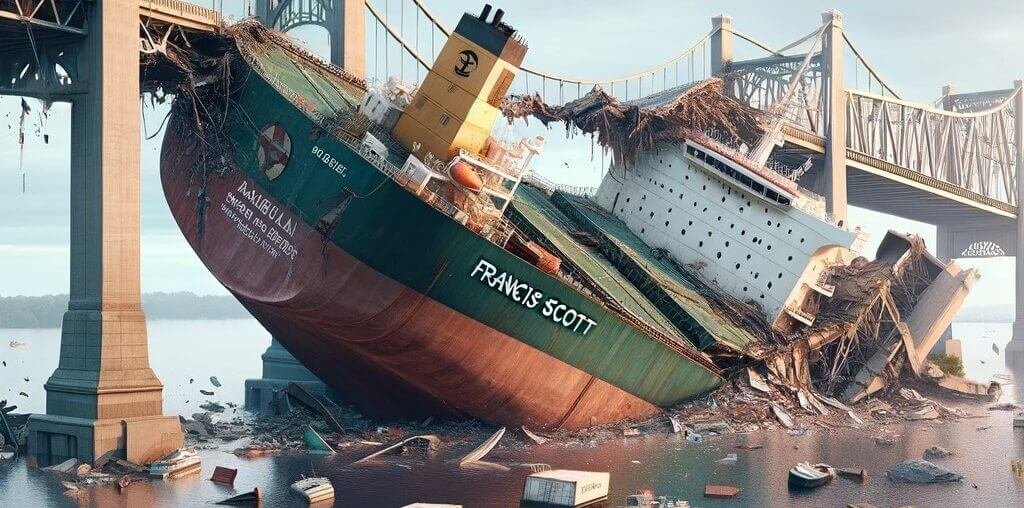On March 26, 2024, the Francis Scott Key Bridge near Baltimore experienced a catastrophic collapse, sending shockwaves through the local community and beyond. As the details emerged, the incident became a fertile ground for a variety of conspiracy theories. Let’s delve into what really happened and debunk some of the myths surrounding this tragic event.
Official Reports: What the Authorities Say
Investigations by local authorities and the National Transportation Safety Board (NTSB) concluded that the collapse was the result of a tragic accident. The cargo ship, operated by a well-known international shipping company, experienced a navigational failure that led to the collision. The ship’s captain reported a sudden mechanical issue that rendered the vessel uncontrollable, leading to the bridge strike.
Debunking the Conspiracy Theories
Despite clear evidence pointing to an accidental cause, various conspiracy theories have emerged. Here are some of the most prevalent myths and the facts that debunk them:
- Cyber-Attack Claims: One theory suggests that the bridge collapse was the result of a deliberate cyber-attack. However, cybersecurity experts and investigators found no evidence of any digital tampering or hacking attempts. The ship’s mechanical failure was due to a well-documented technical issue, not external interference (FactCheck.org).
- Intentional Demolition: Another conspiracy posits that the collapse was part of an intentional demolition to pave the way for new infrastructure projects. This theory is easily debunked by the urgent and unplanned nature of the response from local authorities, who are now focused on emergency repairs and restoring the bridge (FactCheck.org).
- Insurance Fraud: Some believe that the shipping company deliberately caused the accident for insurance money. This claim is unfounded, as the company faces massive fines and operational losses, which far outweigh any potential insurance payout.
The Impact on Baltimore
The collapse of the Francis Scott Key Bridge has had significant repercussions for Baltimore’s transportation network. Emergency services and repair crews have been working around the clock to assess the damage and begin the lengthy process of reconstruction. Commuters and logistics companies are being rerouted, causing substantial delays and increased traffic in other parts of the city.
Moving Forward: Rebuilding and Recovery
Reconstruction efforts are already underway, with local government and federal agencies collaborating to expedite the process. Engineers are conducting thorough inspections to ensure that the new structure will be even more resilient. In the meantime, alternative transportation arrangements are being made to mitigate the impact on daily commuters and businesses.
Conclusion
The collapse of the Francis Scott Key Bridge is a reminder of the importance of infrastructure maintenance and the swift response required in the face of such disasters. While conspiracy theories may offer sensational explanations, the facts clearly point to an unfortunate accident. Let’s focus on supporting the recovery efforts and ensuring the safety and stability of our vital transportation networks.

